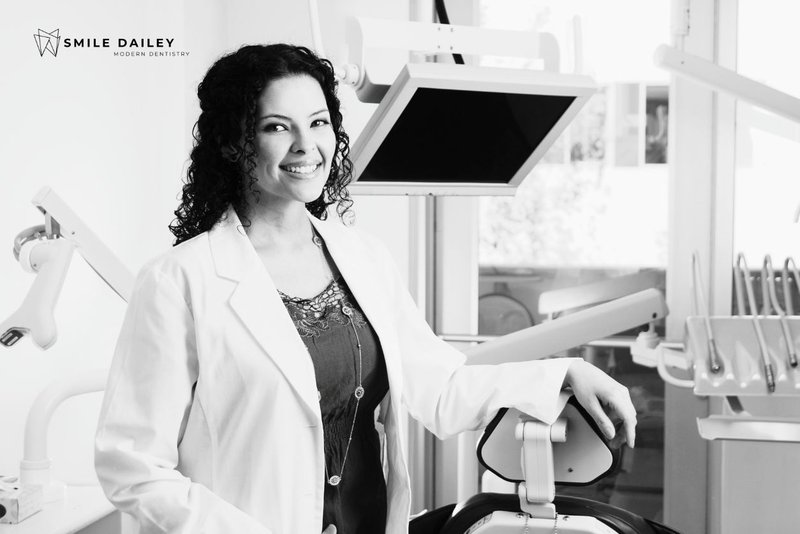Becoming a dental hygienist can be a rewarding career. It has strong job growth, competitive pay, as well as the opportunity to help people daily. If you’re serious about pursuing this profession, there are a few steps that are essential for success. The first step to get started is finding out the education requirements. The next steps include your education, career training, and, finally, licensing.
Key Takeaways:
- Education Requirements: An associate degree in dental hygiene is required for licensure. A bachelor’s degree also provides additional career opportunities. Programs must be accredited by the Commission of Dental Accreditation.
- Prerequisites & Admission: Biology, chemistry, anatomy, and nutrition courses are required. Admission is competitive. A strong GPA and clinical experience improve acceptance chances.
- Program Cost: An associate degree costs between $5,000–$30,000, but a bachelor’s degree is between $20,000–$80,000. Additional costs can also range from $1,000–$5,000. Financial aid and scholarships are available.
- Licensure: Pass the NBDHE exam, meet state clinical requirements, and then complete continuing education for renewal.
- Career & Salary: Median salary $81,400/year. Projected job growth is 9% from 2021-2031.
- Challenges: Demanding coursework, physical strain, workplace stress, and limited career advancement without further education.
- Pros & Cons: Pros are job flexibility, strong earnings, and patient interaction. However, some cons are physical demands as well as patient anxiety.

The Steps to Becoming a Dental Hygienist
Education Requirements
A formal education is required to become a dental hygienist. Most students complete an associate degree which takes about two years. Some choose a bachelor’s degree if they intend to work in research or public health. The program must also be accredited by the Commission on Dental Accreditation (CODA) for licensure eligibility.
Prerequisite Courses
Before applying to a dental hygiene program, applicants must meet specific prerequisites. Most schools require foundational coursework in biology, chemistry, anatomy, as well as nutrition. Strong grades in these subjects improve admission prospects.
Applying to an Accredited Dental Hygiene Program
Admissions can be competitive. A high GPA, relevant experience and strong test scores improve your standing. Some programs require entrance exams and interviews. Once accepted, students study oral anatomy, radiology, periodontics, and patient care. Hands-on clinical training is crucial in preparing graduates for licensure.
Becoming a Dental Hygienist: What Degree Do I Need?
To become a dental hygienist, an associate degree in dental hygiene is the minimum requirement for licensure in the U.S. This program, which lasts about two years, includes coursework, lab work, and also clinical practice.
A bachelor’s degree in dental hygiene takes about four years. This degree offers additional training in research, public health, as well as leadership. While it is not necessary for entry-level positions, it can lead to additional careers in education, administration, and specialized dental care.
Associate vs. Bachelor's Degree
Associate Degree
- Duration is typically 17 to 22 months
- Available at community colleges and technical schools
- Focuses on clinical skills, patient education, as well as preventive care
- Meets the minimum requirement for state licensure
Bachelor’s Degree
- Duration is four years
- Offered at universities and dental schools
- Includes expanded coursework in research, health policy, as well as leadership
- Opens pathways to education, management, and specialized dental care
Coursework and Clinical Training for Becoming a Dental Hygienist
Students study a range of topics such as anatomy, oral health, and radiography. Clinical training provides hands-on experience working with real patients. This training focuses on cleaning teeth, taking X-rays, as well as identifying dental conditions.
Accelerated and Online Degree Options
Some schools offer accelerated programs for those with prior healthcare education. These shorten the program duration, but require an intense workload.
Online programs are also available, but the clinical training must be completed in person. A hybrid program, which combines online coursework with hands-on clinics, is the most flexible option.
For more details on these options, visit the American Dental Hygienists’ Association.
Length of a Dental Hygiene Program
An associate degree in dental hygiene usually takes 17 to 22 months. However, a bachelor’s degree requires about four years.
The program length depends on several factors which include:
- Accelerated Programs: For students with prior credits with a reduced timeframe.
- Part-Time Enrollment: Extends the duration of the program.
- Waiting Lists: May delay the start date depending on the length of the list.
Some schools offer intensive nine-month programs, but these are rare and have strict admission requirements. Always confirm that any program is CODA-accredited.
The Cost of a Dental Hygiene Program
Costs vary based on the institution and degree level. Below are the typical cost ranges for each.
- Associate Degree: $5,000–$30,000 (community colleges or technical schools)
- Bachelor’s Degree: $20,000–$80,000 (universities)
- Additional Expenses: Books, lab fees, uniforms, and also equipment ($1,000–$5,000)
Students in programs requiring clinical placements may also incur additional costs for transportation or housing costs.
Financial assistance is available through grants, student loans, as well as scholarships. Organizations like the American Dental Hygienists' Association (ADHA) offer scholarships. Those seeking more affordable options could consider community colleges or public universities as well.
Licensure for Becoming a Dental Hygienist
A dental hygienist must obtain a license by passing exams as well as meeting state minimum requirements.
National Board Exam
The National Board Dental Hygiene Examination (NBDHE) is mandatory in all states. The exam consists of multiple-choice questions covering clinical knowledge, patient care, and oral disease prevention. A CODA-accredited degree is also required to take this exam.
State Licensing Requirements
Each state sets its own additional testing rules. Many states require a clinical exam for hands-on skills which may involve working on a real patient or a manikin model. Some also require a law and ethics exam covering local regulations. The American Association of Dental Boards (AADB) maintains a list of specific state requirements.
License Renewal and Continuing Education
Licensure generally requires renewal every 1–3 years, with mandatory continuing education (CE) courses. These courses keep practitioners updated on new technologies, infection control, and pain management techniques.
Career Opportunities for Dental Hygienists
When becoming a dental hygienist, most believe working in a private dental office is the only option. Opportunities also exist in public health clinics, hospitals, schools, research laboratories, and dental sales.
The Bureau of Labor Statistics projects a 9% job growth from 2021 to 2031, reflecting an increasing demand for preventive dental care. Those interested in career development options often seek education, advocacy, or administrative roles.
The Salary Potential for Dental Hygienists
Salaries depend on experience, location, as well as the specialization. According to the Bureau of Labor Statistics, the average U.S. salary for dental hygienists is $81,400 per year. Hourly pay averages $39.14 though this varies by region and employer.
The Highest-Paying States Are:
- California: $108,200 per year
- Washington: $106,200 per year
- Alaska: $103,700 per year
- Oregon: $96,500 per year
For specific salary information, check the Bureau of Labor Statistics website.
The Biggest Challenges of Being a Dental Hygienist
Dental hygiene school involves intensive coursework in anatomy, radiology, and patient care. The clinical experience requires precision and confidence while working under supervision. Managing academic commitments and practical training can be stressful.
Workplace challenges include long hours on your feet, repetitive hand motions, and managing patient anxiety. Proper posture, stretching, as well as stress-reducing techniques help mitigate these issues.
The Pros and Cons of Becoming a Dental Hygienist
Advantages
- High job demand
- Competitive salary
- Flexible schedules
- Meaningful patient interactions
Drawbacks
- Physical strain
- Dealing with anxious patients
- Limited career growth without further education
Start Your Career in Dental Hygiene with Dean Dental Solutions
Are you passionate about oral health and considering a career in dental hygiene? Dean Dental Solutions is here to guide you on this rewarding path! Explore our resources and start your journey towards becoming a dental hygienist today. Visit Dean Dental Solutions for more information. Your future in dental care starts here!

